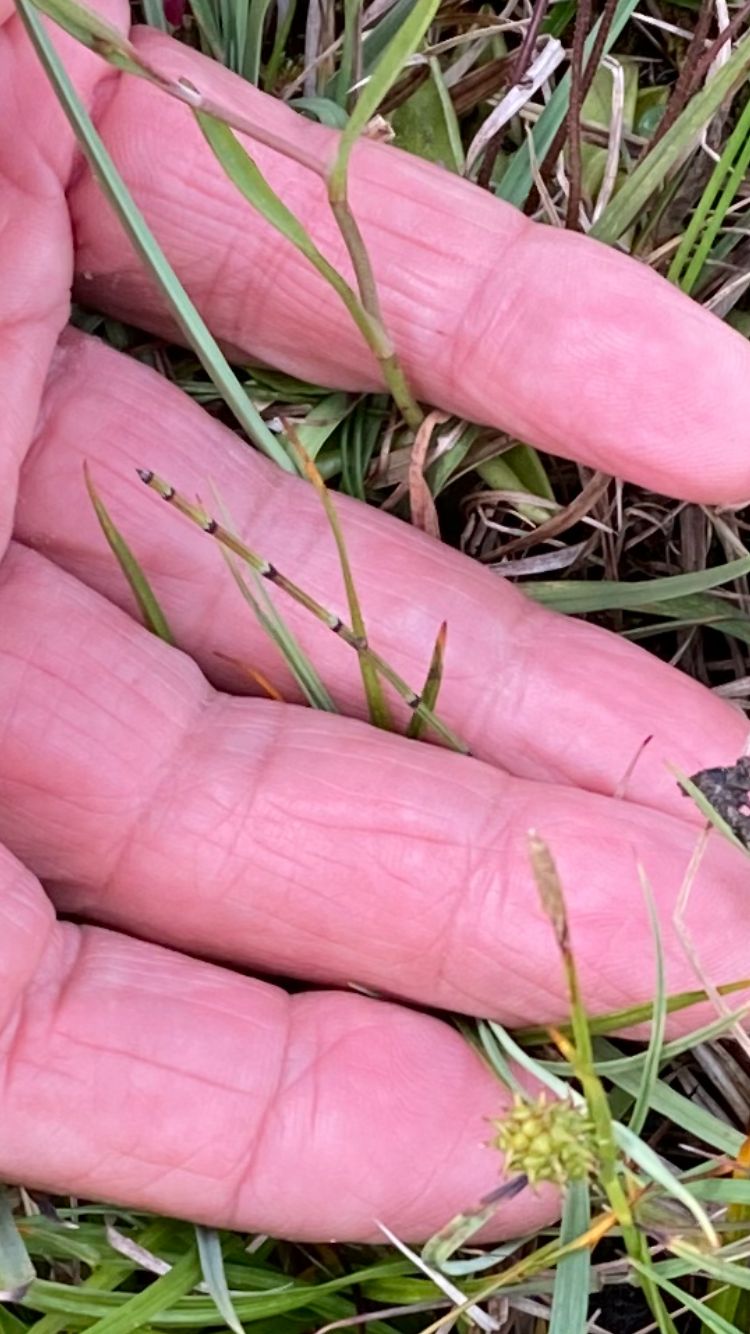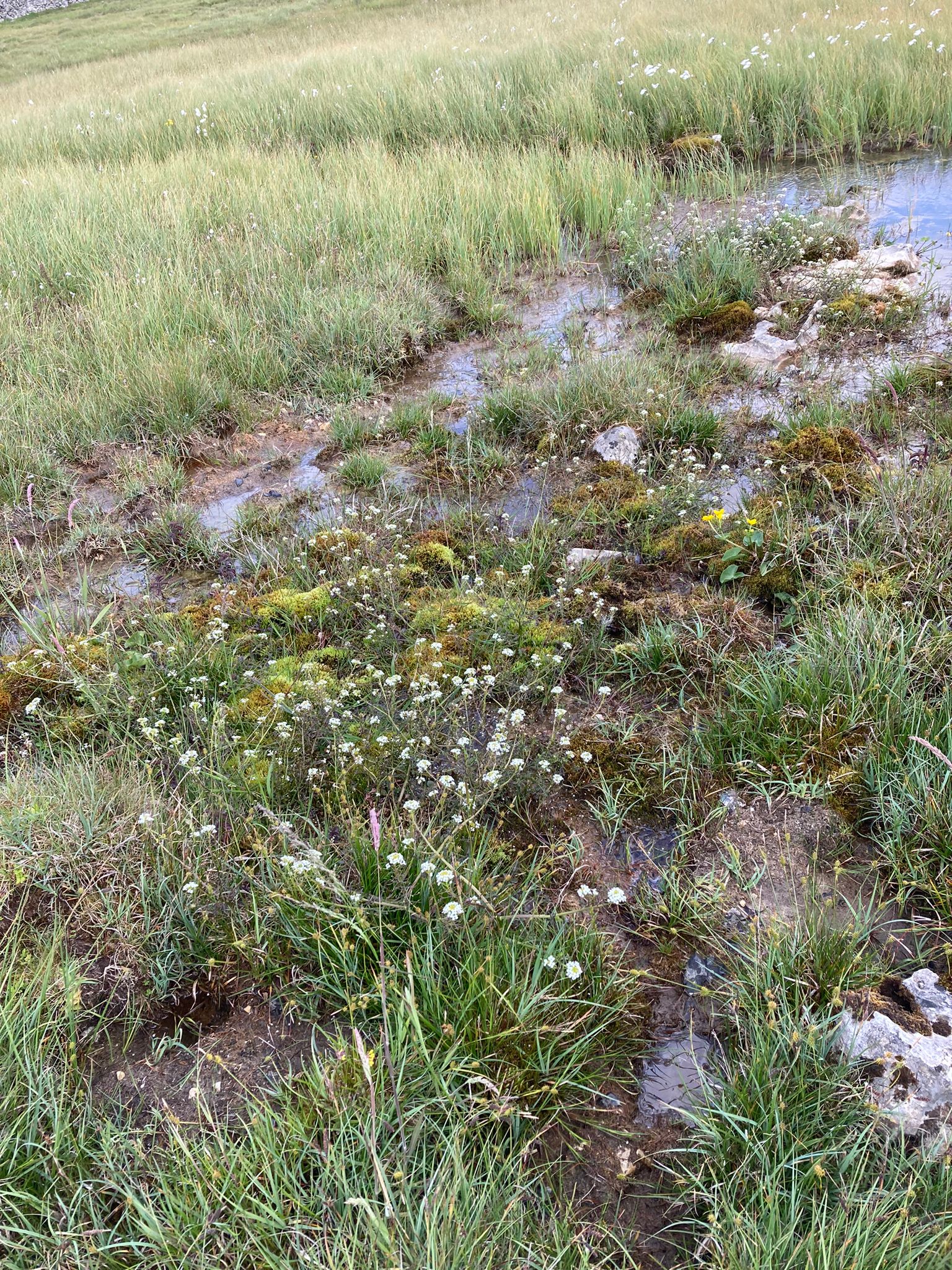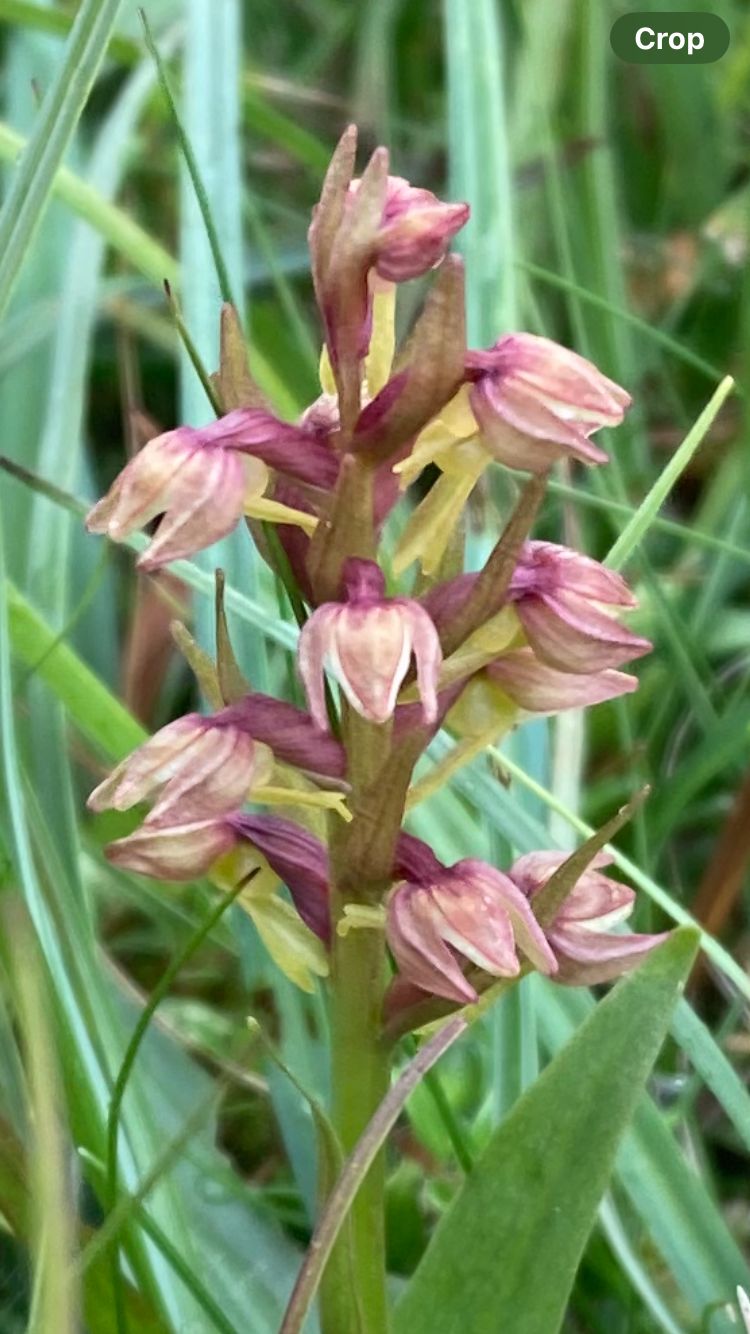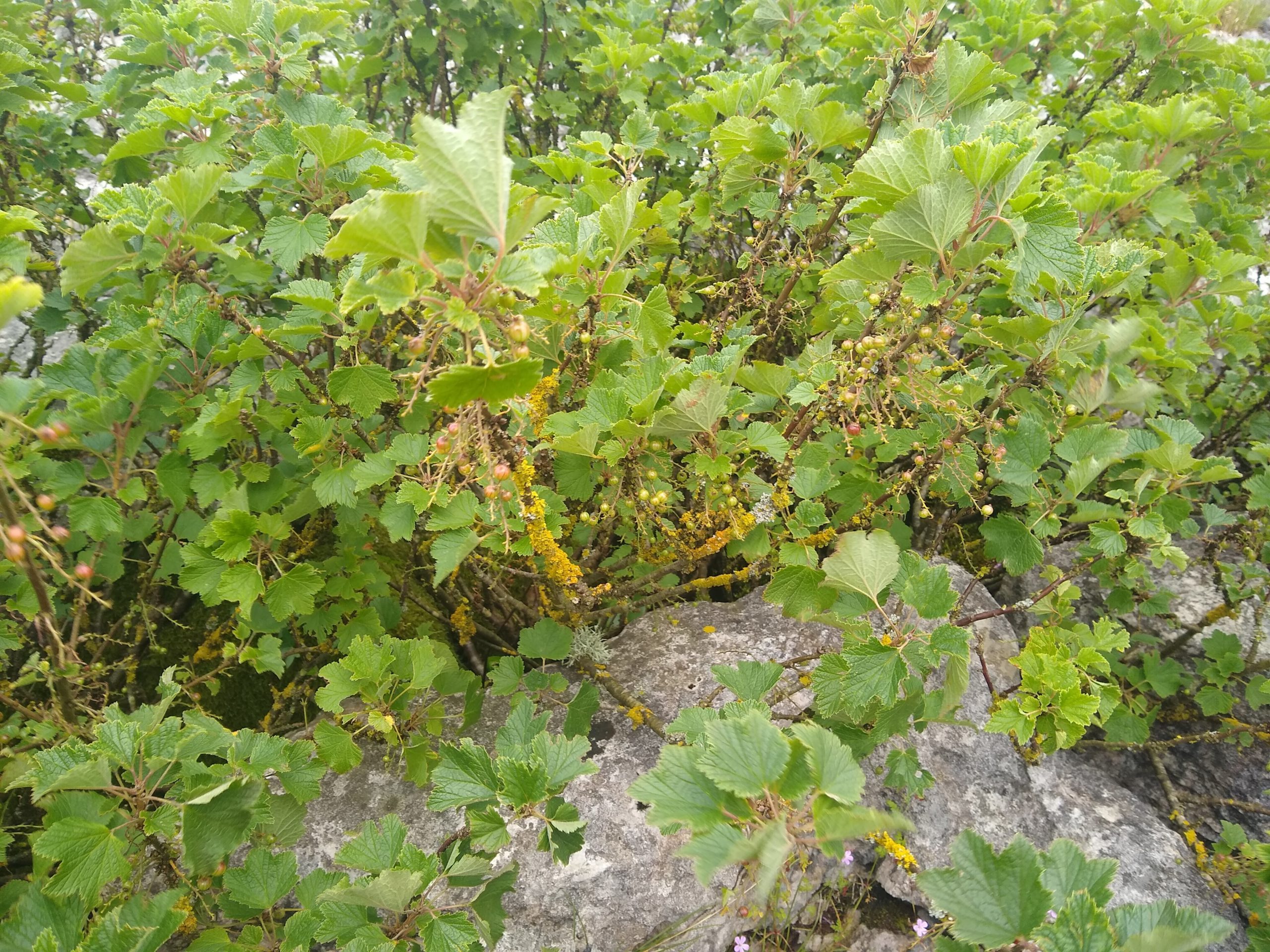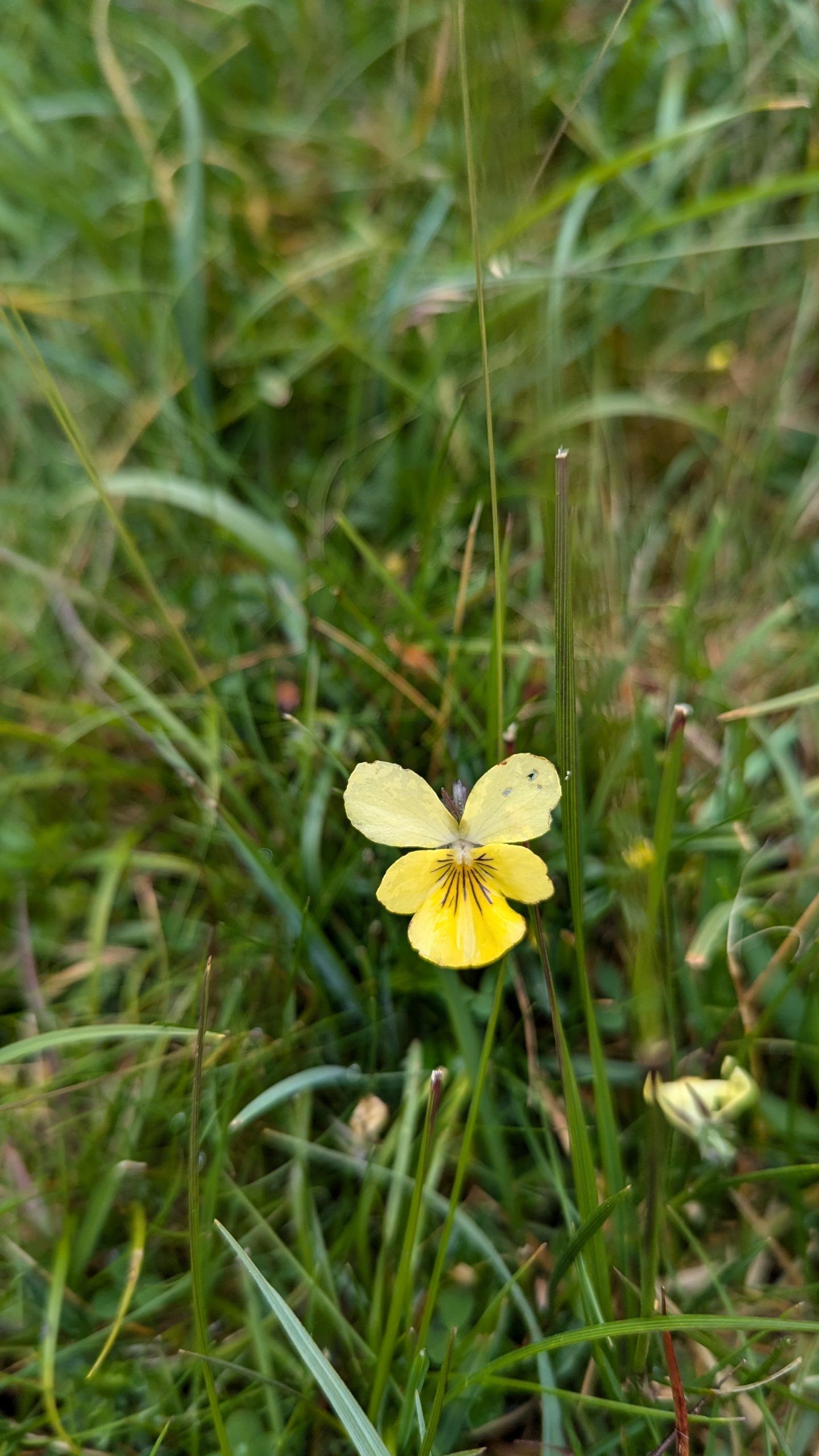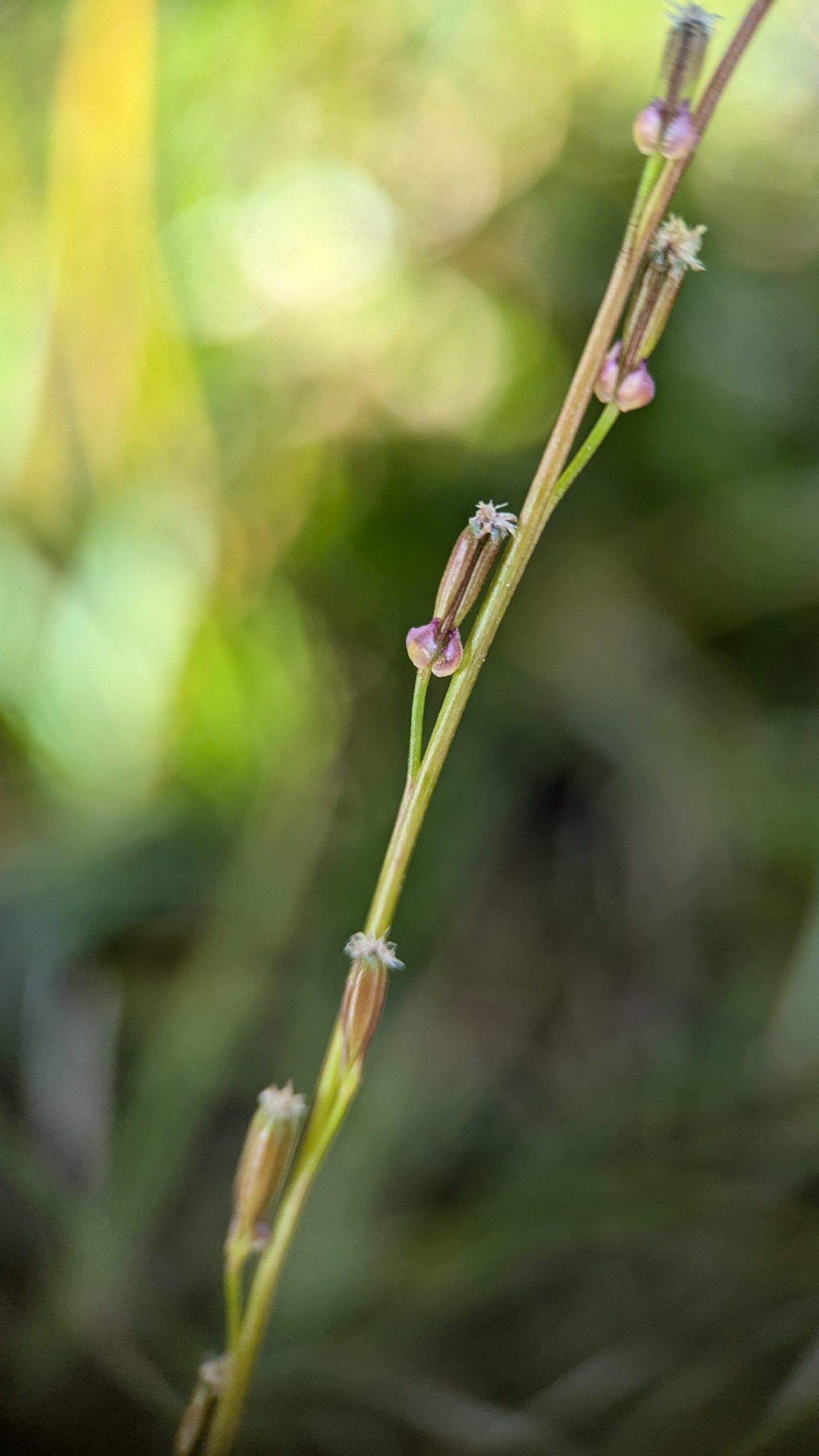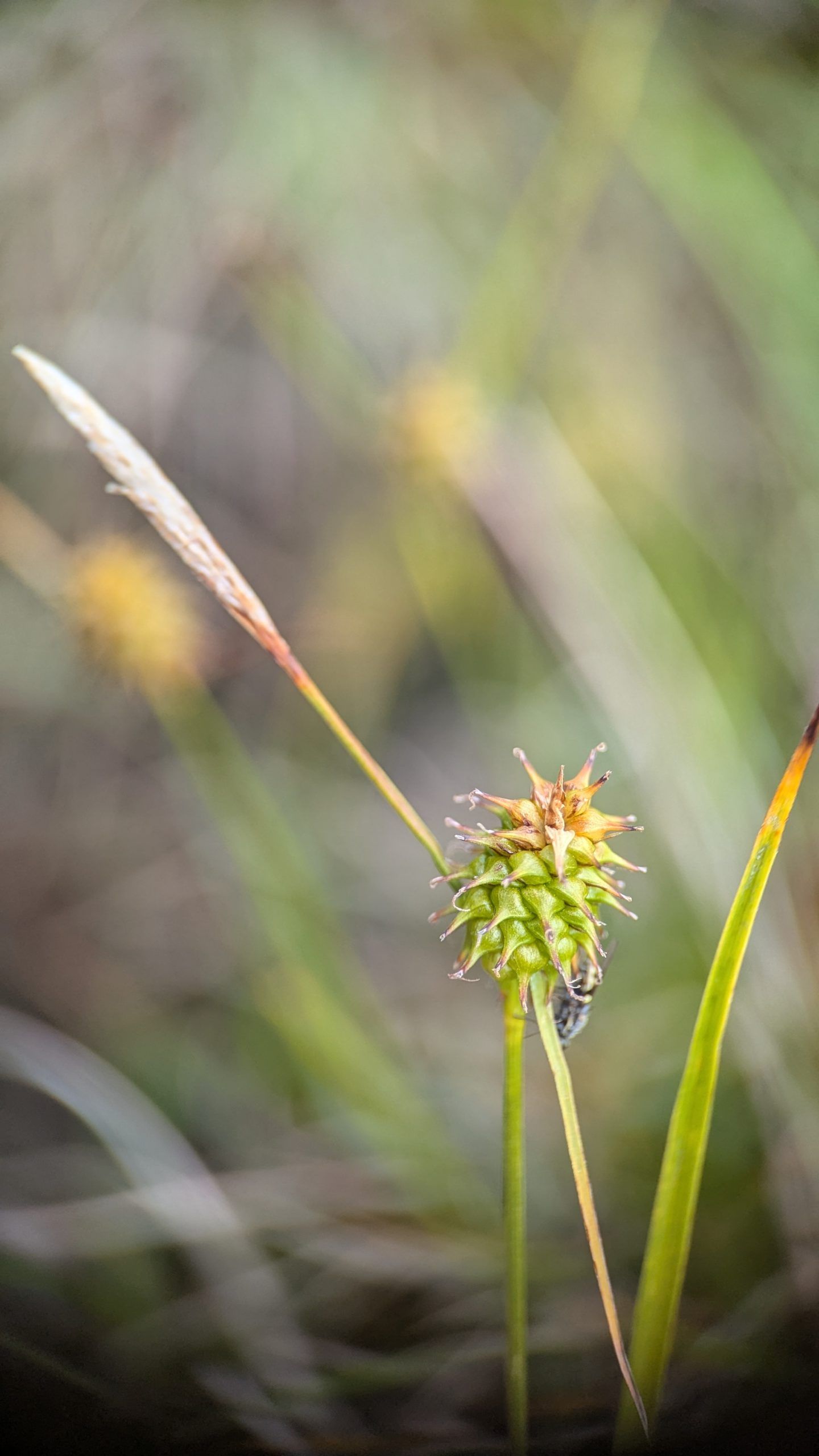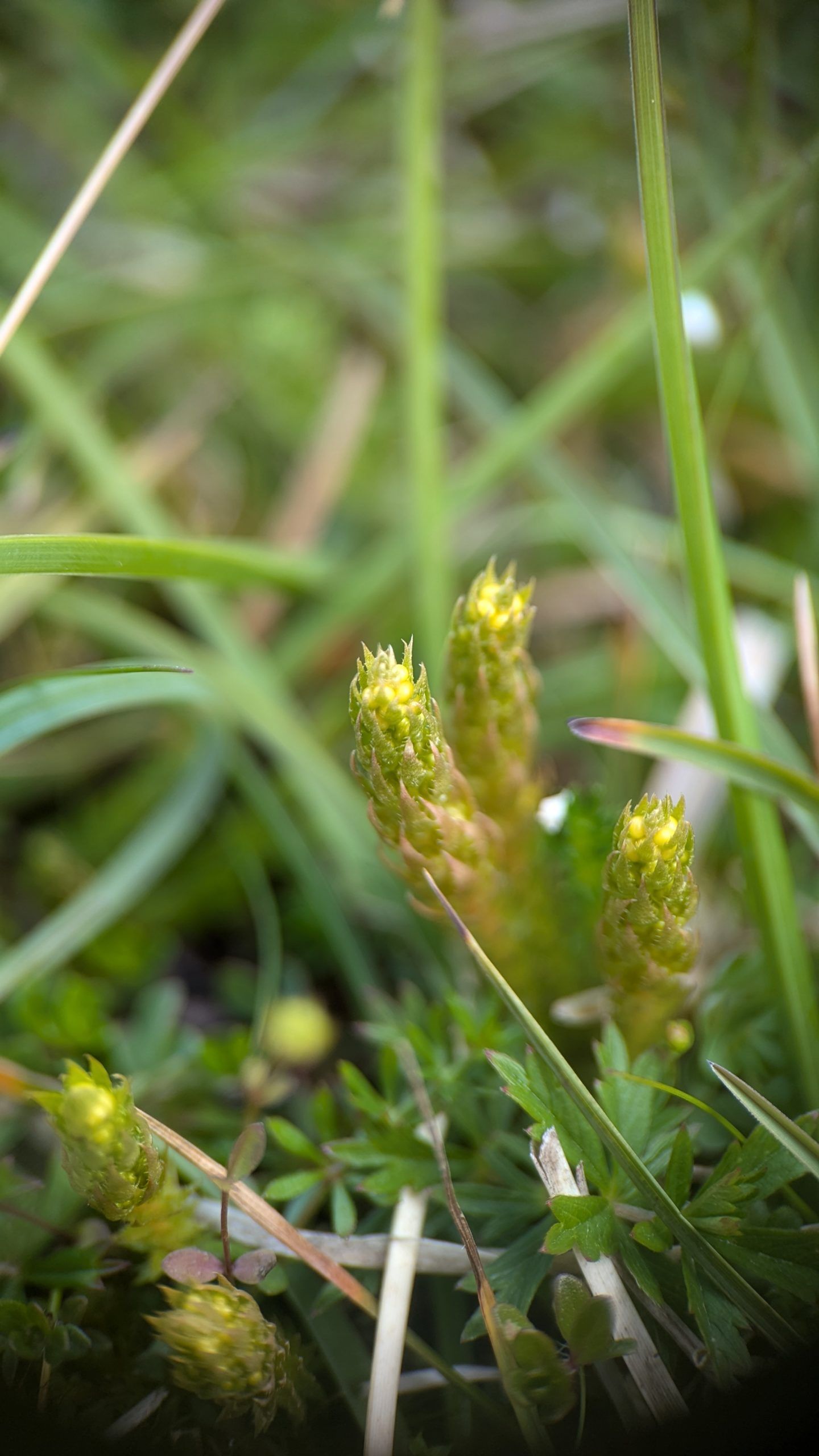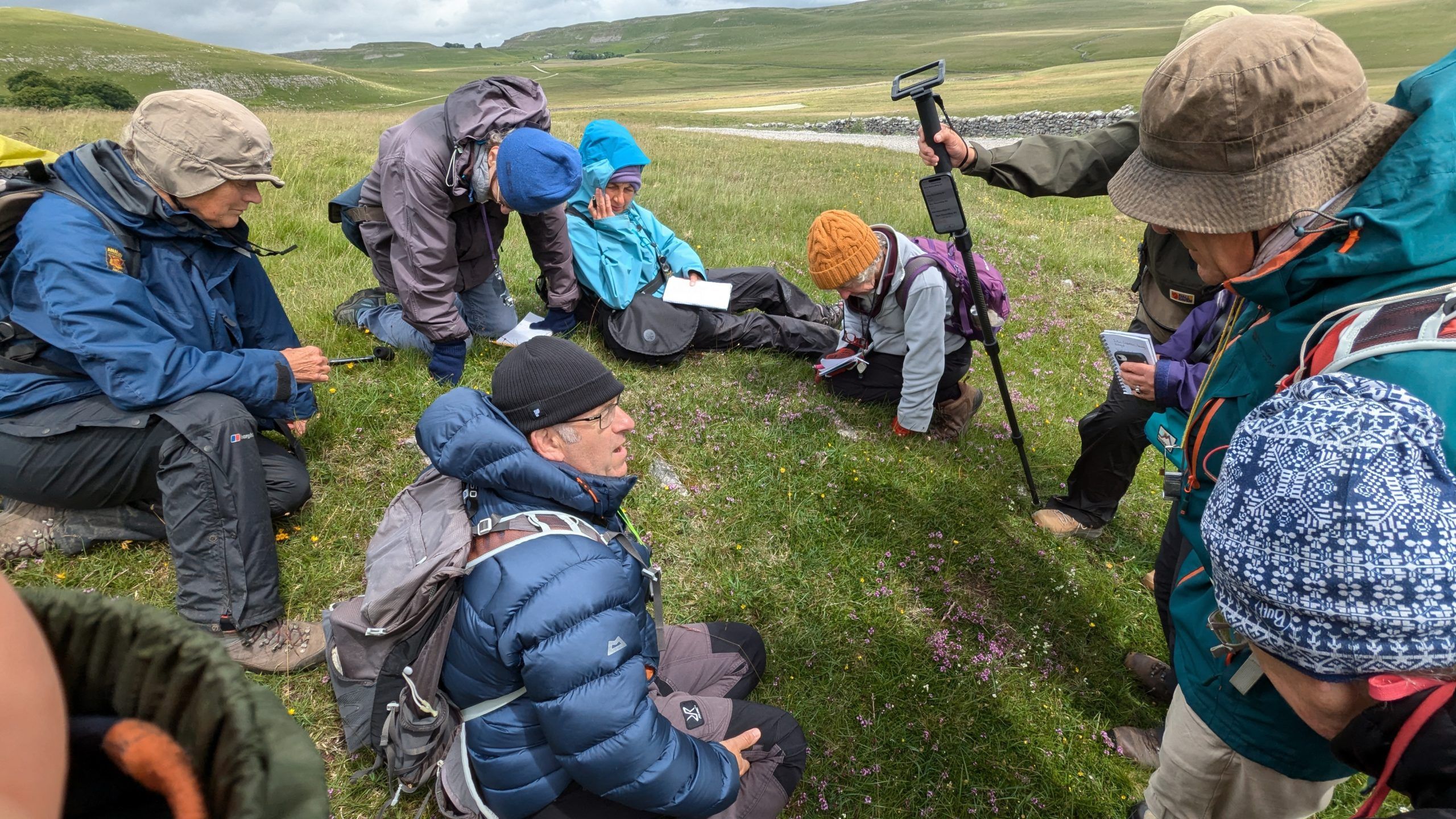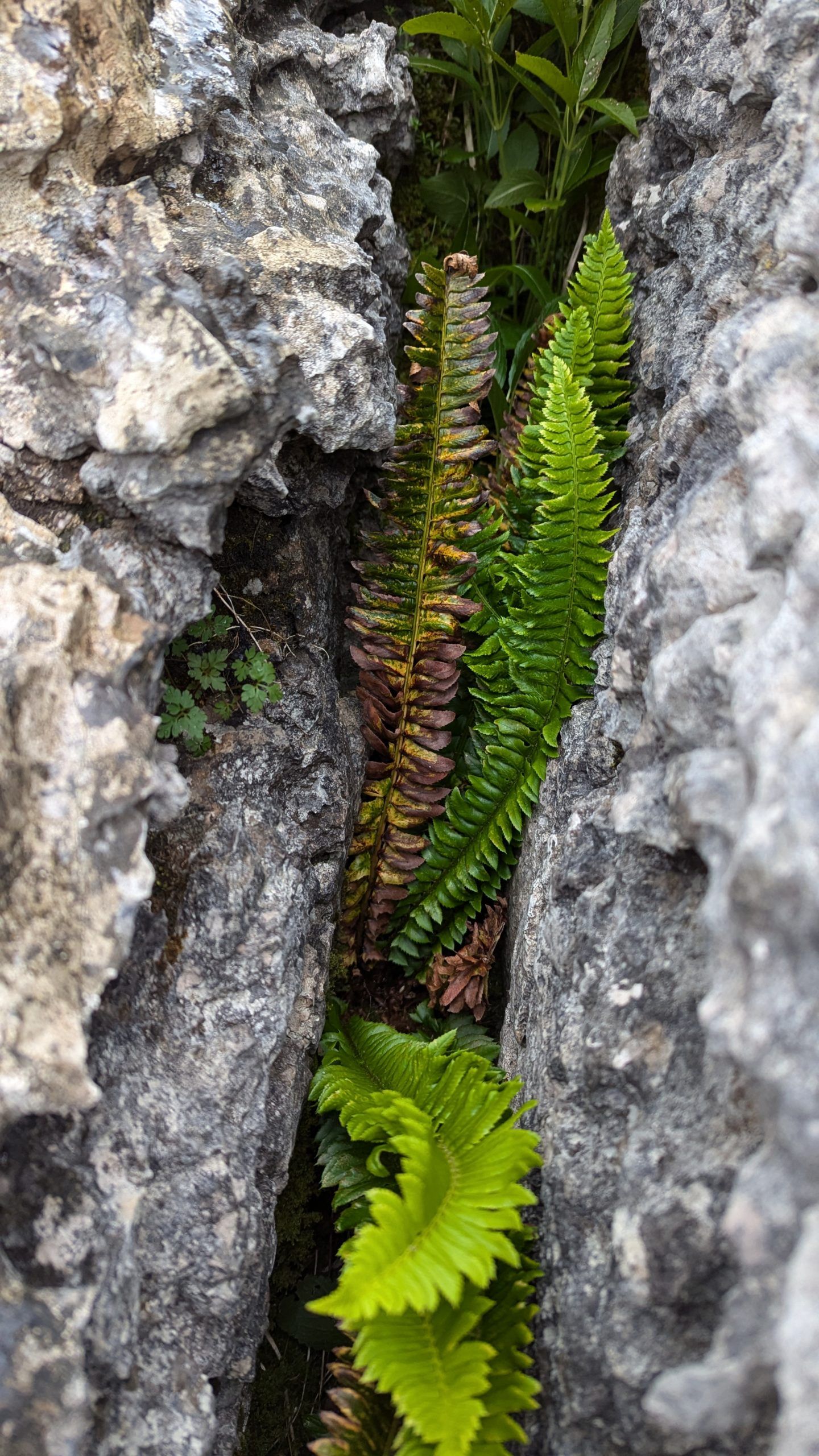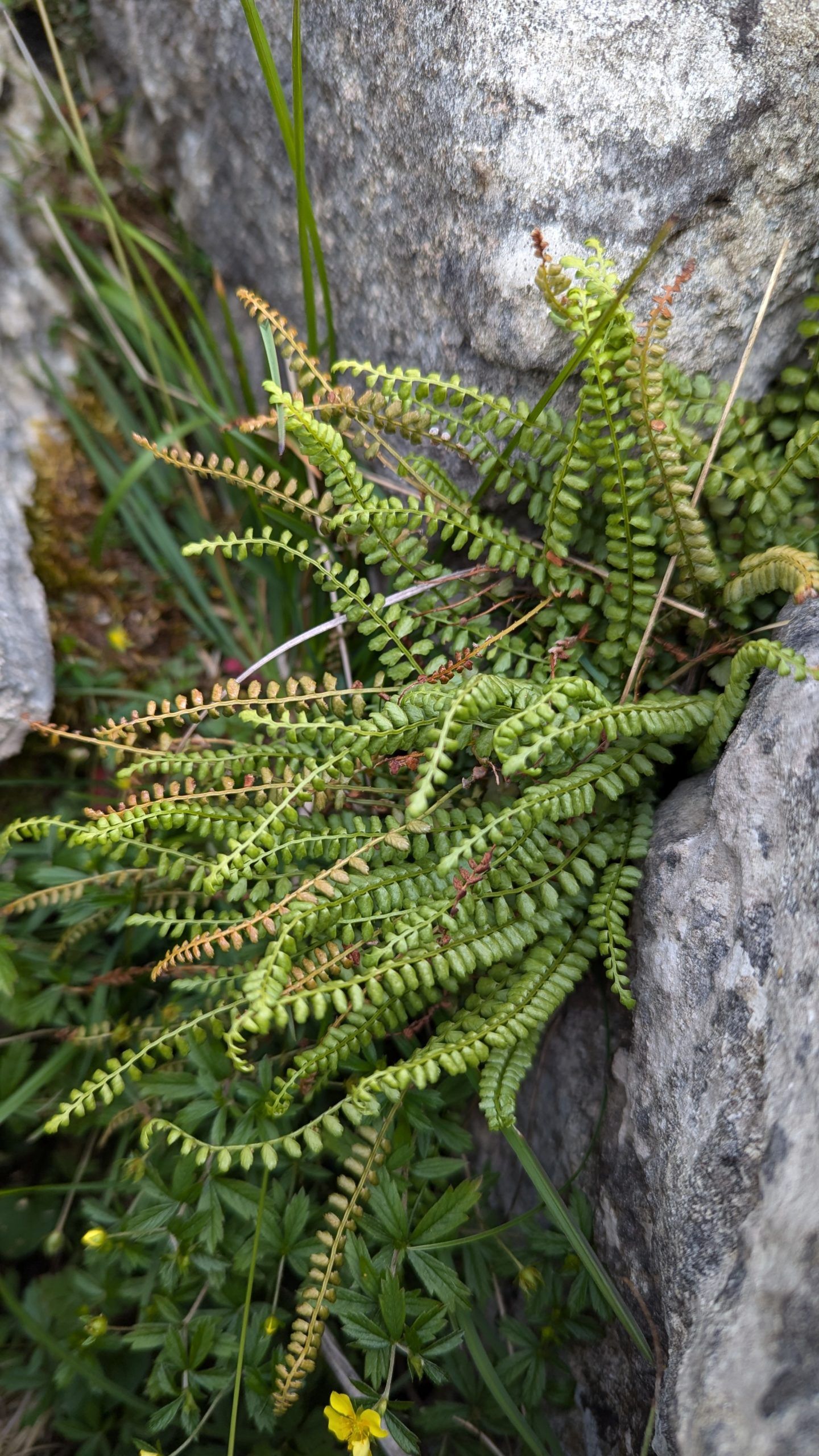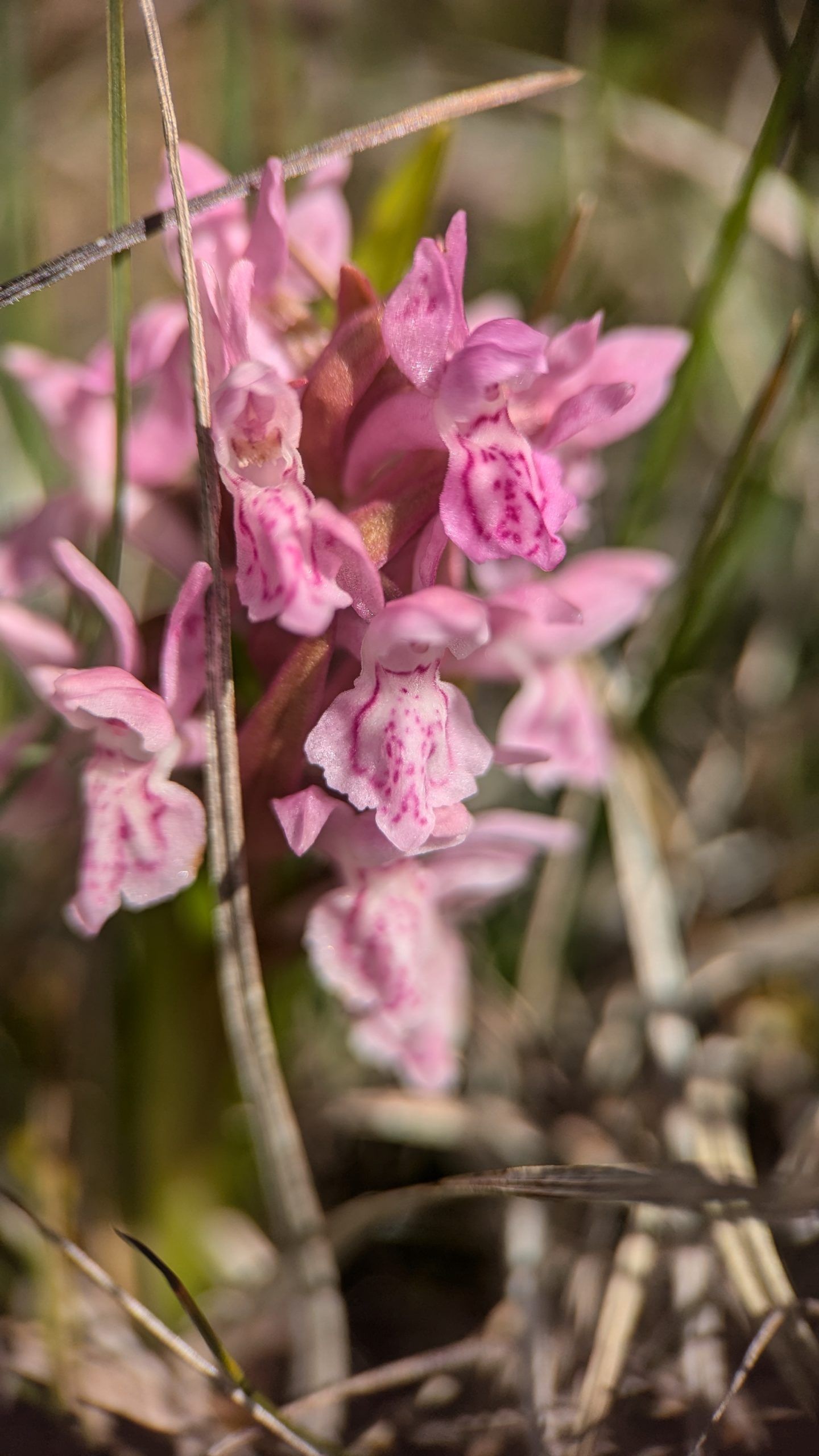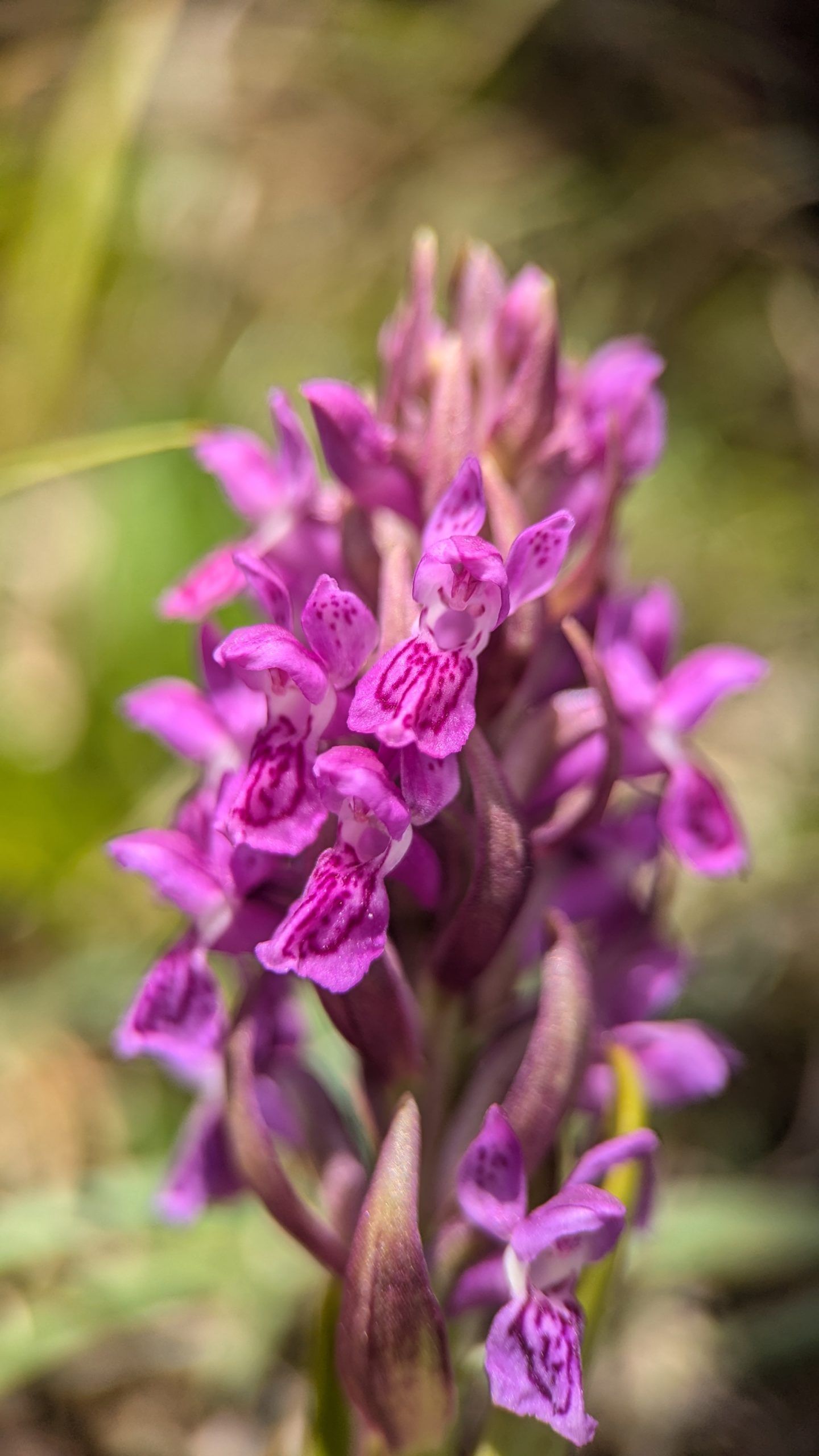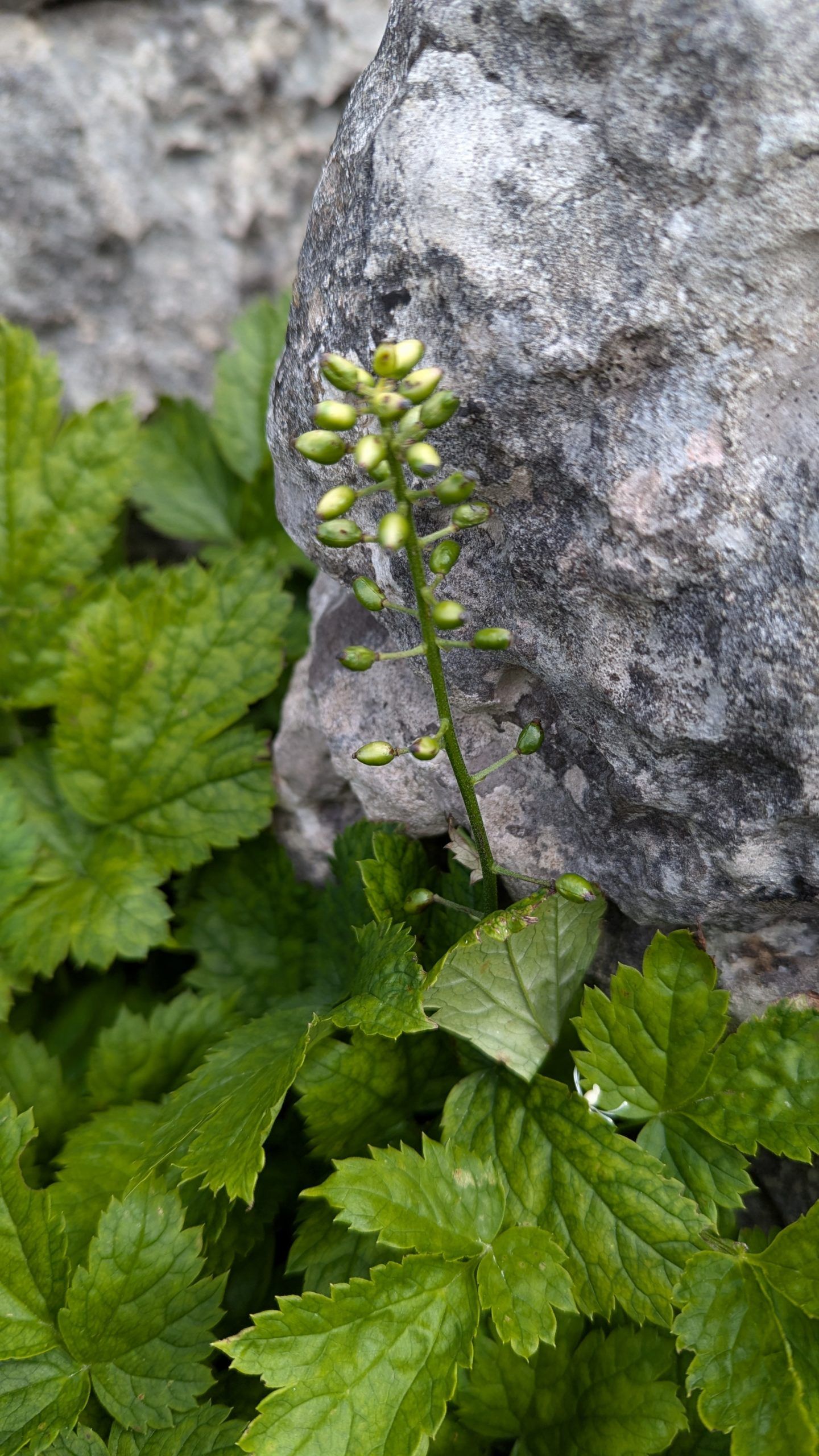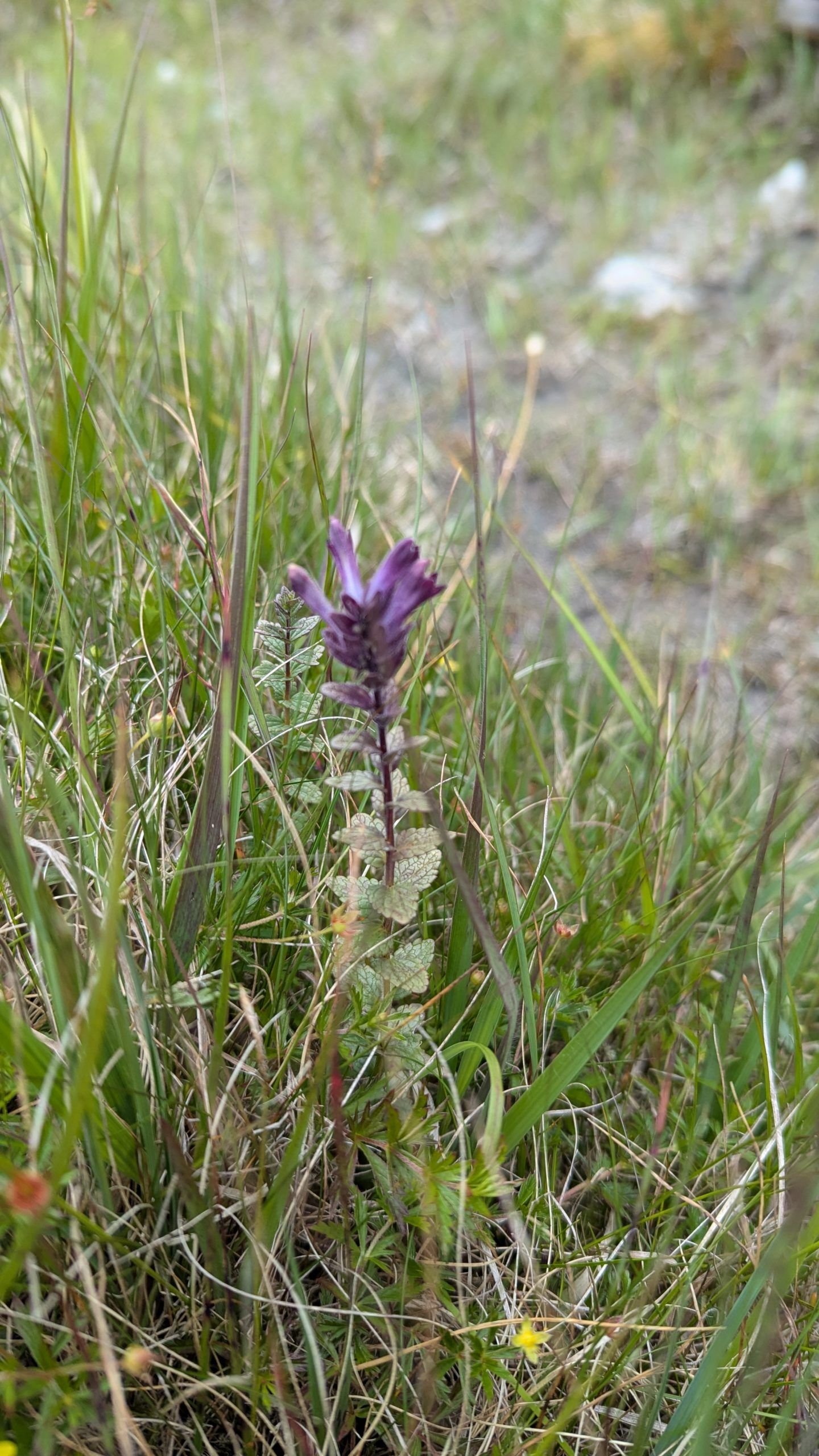Perhaps like me, some of you may have thumbed through UK wild plant books and thought that never in a million years will I find that plant, due to its extreme rarity. Never would I get that lucky. But on Thursday 27 June we all did get that lucky. In truth, this was thanks to the skill and knowledge of Dr Kevin Walker, BSBI Head of Science, rather than luck.
Despite the temperature in Harrogate the previous day being around 24 degrees, there was a drastic overnight change and when we reached Malham we found ourselves battling against strong gusty winds and temperatures 10 degrees lower. However we set off undeterred, with one brave soul (the only stalwart amongst us) wearing his shorts. As we progressed we began to realise what a rare and precious place we were exploring.
Our foray began at Street Gate, close to Malham Tarn, with our main areas of exploration being Great Close, followed by a limestone pavement close by. Great Close Mire is fed by strong springs emanating from the base of Great Scar Close. It occupies a trough which slopes southwards towards the head of the Gordale Beck valley through which spring water flows in small braided channels. Calcareous mire vegetation grows between these channels. The community here contains very rare plants including several rare Carex species.
At first the presence of Tormentil indicated that the soil beneath our feet was acidic as well as comprising limestone. This healthy mix of soils of course enables a species rich grassland environment. Both Heath and Limestone Bedstraw were present and Kevin explained how to distinguish between the two species. We were also shown Mat-grass, which forms dense tufts and is unpalatable to sheep (it becomes hard and fibrous through the season).
There was an enormous array of sedges for us to consider. Flea Sedge (when the fruits are touched they can quickly spring from the plant, like fleas). Others included Bottle Sedge (with its flask-shaped, shiny fruits), Pineapple Sedge (a sterile hybrid), Spring Sedge (with recurved shiny, bright green leaves) and Pill Sedge (with its densely-tufted spreading habit) and many more.
Despite their mini size, we espied Frog Orchids and continued to find them throughout the day. Northern Marsh Orchid and Early Marsh Orchid were also present. Other finds included Lesser Spearwort, Birdseye Primrose, Butterwort, Marsh Lousewort, Common Lousewort, Yellow Rattle and Marsh Arrowgrass (which smells like Coriander). We learned the distinction between Common Cottongrass (spikelet stalks smooth) and Broad-leaved Cottongrass (spikelet stalks rough).
It was interesting to see Mountain Everlasting, Antennaria dioica which is found on mountain grassland, with its white-woolly undersides to its leaves. It is also known as Catsfoot, which may be derived from the flower clusters which are thought to resemble the pads of a cat’s paw. Although it is dioecious, it can also reproduce without fertilisation.
I believe the prize awarded for the most primitive plant found in one of the flushes was a Lycophyte, Lesser Clubmoss, Selaginella selaginoides. And the rarest plant was probably Alpine Bartsia, Bartsia alpina which grows on the tussocks. This plant is a hemiparasite and is at its southern limit here in the UK. Finally, the prize for the most promiscuous plant goes to the Marsh Thistle, Cirsium palustre. Who would have thought it?
We then left Great Close and visited the limestone pavement close by. Here we stumbled (literally) across further rarities: Orpine, a succulent which has potential health benefits including anti-inflammatory and antioxidant effects; Downy Currant which can be distinguished from the common Redcurrant by its leaves; Baneberry a plant requiring key factors such as shade, low competition, and a cool protected root run. It is toxic and is also an irritant; Green Spleenwort and Maidenhair Spleenwort; and Variegated Horsetail. Then finally the crowning glory – the rare Holly Fern, Polystichum lonchitis. Holly Fern is one of the Shield Ferns and has sharply spine-pointed teeth on oval-triangular pinnae. This fern was previously found by Muff and Jack, so congratulations to both of them and to those who found it again on the day.
Then, right on cue the rain came down harder and so we headed back to the cars, after such an interesting and rewarding day. We had been shown many plants we were hoping to see and many more besides. Thank you to our Leader, our Organisers, our Drivers and all Participants.
References
Yorkshire Dales by John Lee pub William Collins, New Naturalist Series
Colour Identification Guide to the Grasses, Sedges, Rushes & Ferns of the British Isles & North-western Europe by Francis Rose pub Penguin Books
The Wild Flower Key by Francis Rose pub Frederick Warne
Sonia Starbuck
